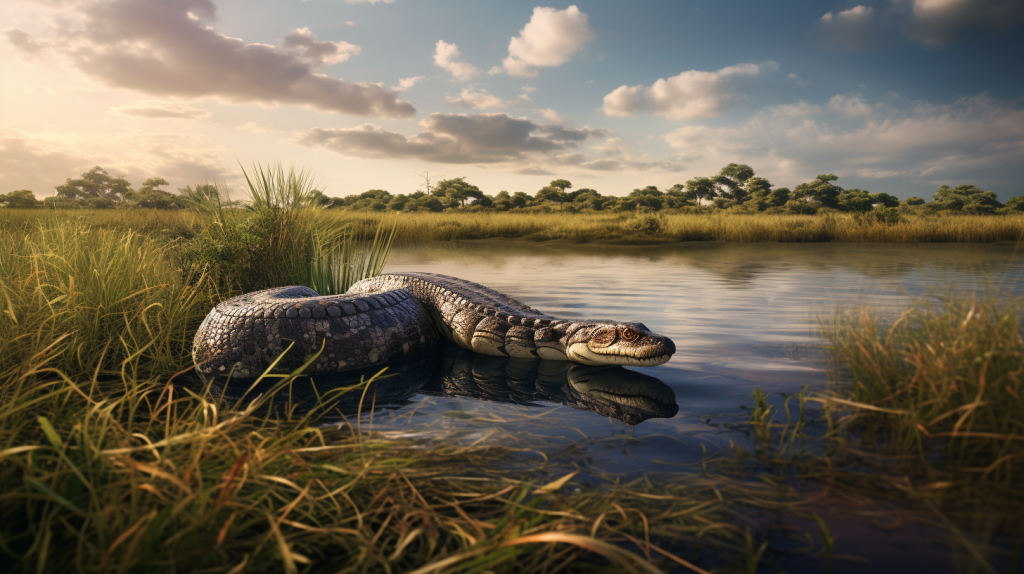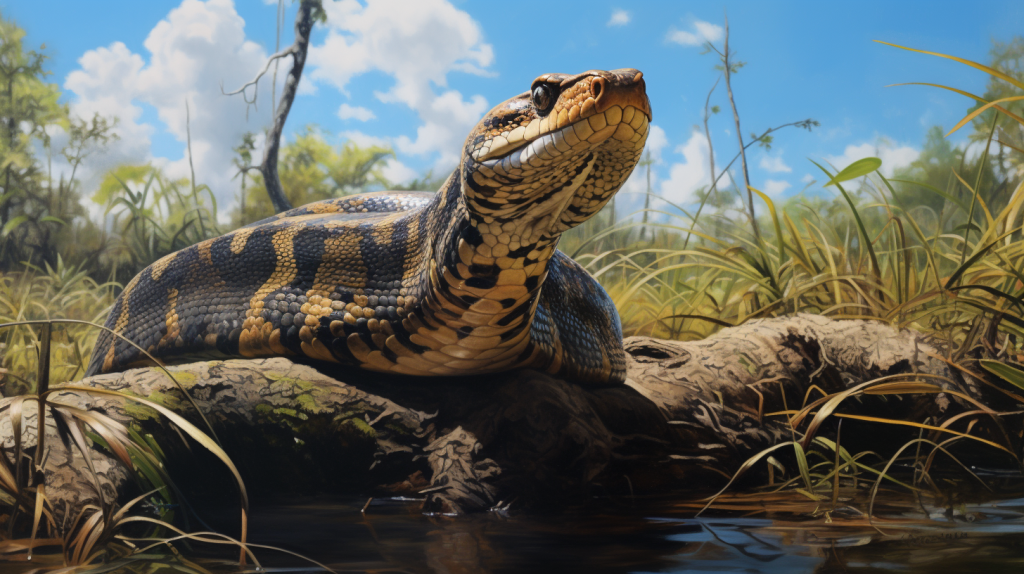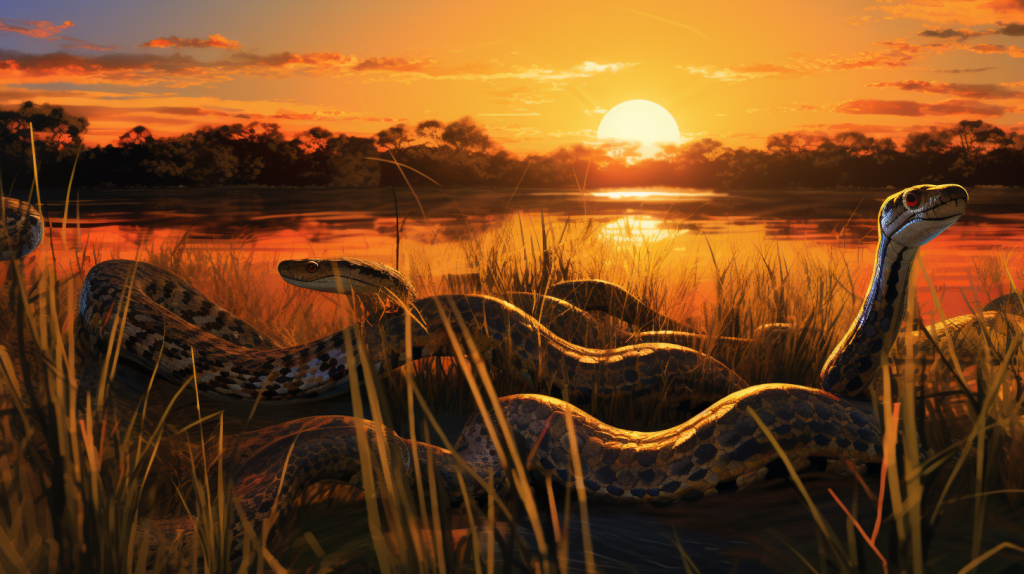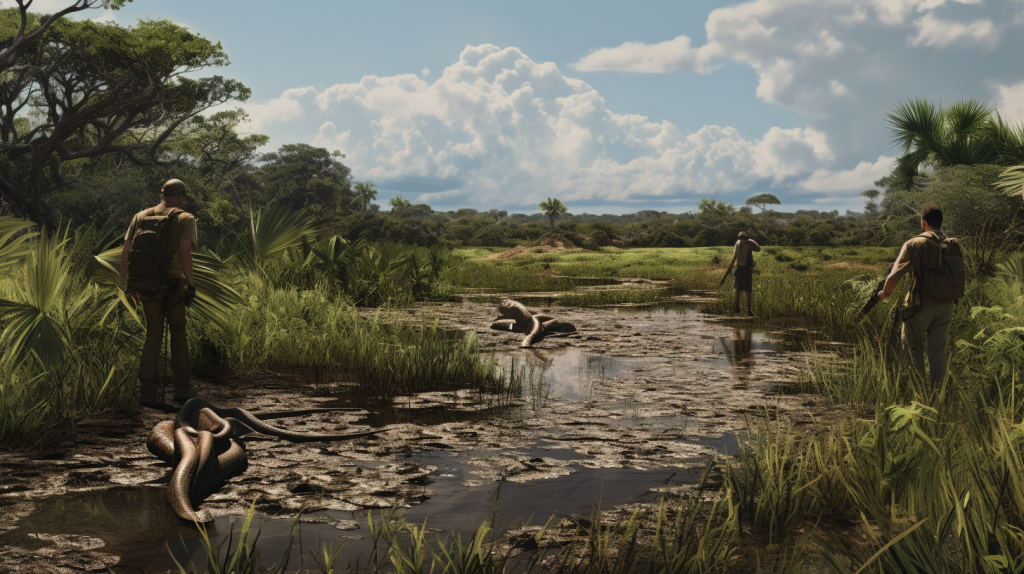Have you ever ventured into the mesmerizing expanse surrounding snakes in Florida Everglades, where nature’s secrets unfold in all their splendor? Amidst the lush wetlands and intricate ecosystems, a diverse array of snakes call this unique habitat home. In this article, we’ll embark on a journey to uncover the fascinating world of snakes in the Florida Everglades, exploring their intriguing roles, remarkable adaptations, and the enigmatic dance they share with this iconic landscape.
A Closer Look at the Slithering Residents
As you take that daring step into the heart of the captivating Florida Everglades, a mesmerizing cast of snake species awaits your gaze. Each of these serpents possesses a unique story that beckons to be heard, weaving a tapestry of intrigue that complements the complex life of this ecosystem.
From the elusive and mysterious to the boldly charismatic, these serpents paint a vivid picture of the Everglades’ diverse wildlife. Let’s embark on a journey to dive into this comprehensive list and uncover the enigma that these slithering residents bring to this remarkable landscape. See the list:
Eastern Indigo Snake: The Enigmatic Giant
Dominating our list is the remarkable Eastern Indigo Snake, a charismatic giant that glides through the landscape with an aura of mystery. This non-venomous serpent proudly claims the title of being the longest snake native to North America.
Cloaked in an iridescent black-blue hue, the Eastern Indigo Snake stands as a living embodiment of the Everglades’ profound depths. Just as its sinuous form winds through the ecosystem, this enigmatic creature mirrors the vastness and complexity of this unique and irreplaceable natural treasure.
Florida Cottonmouth: The Water Warrior
As you venture deeper into the wetlands of the Florida Everglades, you might find yourself face to face with the formidable Florida Cottonmouth, a serpent renowned as the water warrior of these unique ecosystems. Often referred to as the water moccasin, this snake commands attention with its distinctive white mouth lining that stands out against its dark scales.
With an almost mythical presence, the Florida Cottonmouth assumes the role of a sentinel guarding the waterways. Just like an ever-watchful guardian, it adapts seamlessly to its aquatic domain, blending effortlessly into the rippling currents that traverse the Everglades. In its presence, the connection between the snake and its habitat becomes an intricate dance of survival and adaptation, a testament to the harmony that exists within this dynamic landscape.
Burmese Python: The Invasive Intruder
Amidst the tapestry of native inhabitants, an uninvited guest has stealthily emerged – the Burmese Python. Bursting forth from exotic origins, this invasive species has woven itself insidiously into the very fabric of the Everglades’ narrative.
Their introduction, like a disruptive force of nature, has ignited concerns that reverberate through the corridors of conservation. The shadow they cast stretches beyond their formidable presence, casting doubts upon the equilibrium of the ecosystem they now inhabit.
With an insatiable appetite and an absence of natural predators, these serpents disrupt the delicate balance of the native flora and fauna, prompting an urgent call to action to address the complexities of their coexistence within the intricate tapestry of the Everglades.
Eastern Coral Snake: The Colorful Enchanter
Amidst the monochrome canvas of the Everglades, the Eastern Coral Snake emerges as a burst of vivid color, like a painter’s brushstroke against the natural backdrop. Its vibrant red, yellow, and black bands create an enchanting mosaic that captures attention and imagination.
Yet, beneath this captivating facade lies the intricate dance between beauty and danger. As a venomous snake bearing potent neurotoxins, the Eastern Coral Snake is a living embodiment of the delicate interplay that weaves through the heart of the Everglades – a testament to the multifaceted nature of life in this intricate ecosystem.
Florida Pine Snake: The Subterranean Voyager
Hidden within the shadows of the Everglades, the Florida Pine Snake embarks on a journey below the surface, delving into the depths of a subterranean realm. Cloaked in a striking pattern reminiscent of pine bark, this constrictor merges seamlessly with the intricate textures of its habitat.
As it navigates through the hidden labyrinth, it brings an air of mystique and wonder to the Everglades’ underbelly. With a talent for burrowing that rivals nature’s finest engineers, this serpent unravels the enigma of life beneath the surface, a realm that mirrors the complexities and secrets of the world above in unexpected ways.
Intricacies of Coexistence: Bursting Harmony
In a mesmerizing display of life’s intricate tapestry, these diverse snake species navigate the Everglades’ landscape, participating in a symphony of interactions that shape the essence of this ecosystem. From the interplay of predator and prey to the nuances of coexistence, a burst of harmony emerges that underscores the fragility and resilience of this unique environment.
Much like the notes of a symphonic melody, each snake species contributes its own distinct rhythm to the dynamic dance of life within the Everglades. It’s in this orchestrated unity that the complexity of coexistence finds its voice, echoing through the depths of the ecosystem in a harmonious chorus that reflects the symphony of life itself.
Conservation Efforts: Bursting Hope for the Future
Amidst the complexities of this ecosystem, humans have burst into action to ensure its preservation. Conservationists, researchers, and organizations collaborate to understand the intricate relationships between snakes and their habitat. By unraveling the mysteries that these serpents hold, they aim to pave the way for informed conservation strategies that protect the Everglades’ biodiversity for generations to come.
Conclusion: Snakes In Florida Everglades
In the heart of the south, the snakes in Florida Everglades have become a major talking point due to the Burmese python. The world of snakes bursts forth with wonder, revealing a tapestry of life that captivates the imagination.
From the secretive giants to the colorful enchanter, each snake species adds depth and complexity to this iconic landscape. As we continue to unravel the stories of these serpentine residents, we’re reminded of the bursts of fascination that nature offers, waiting to be discovered by those who venture into its embrace.
FAQs: Unveiling the Mysteries
Q: Are all snake species in the Florida Everglades venomous?
No, not all snake species in the Everglades are venomous. While some are venomous, many are non-venomous and play important roles in the ecosystem.
Q: What role do snakes play in the Everglades’ ecosystem?
Snakes in the Everglades have diverse roles. They help control rodent populations, regulate prey species, and maintain the delicate balance of the food chain.
Q: How do snakes adapt to the Everglades’ unique environment?
Snakes adapt through various ways, such as their behaviors, diets, and physical characteristics. Some are aquatic and thrive in water, while others have specialized patterns for camouflage.
Q: Are there any endangered snake species in the Everglades?
Yes, some snake species in the Everglades are listed as threatened or endangered. The Eastern Indigo Snake, for example, is a federally threatened species due to habitat loss and other factors.
Q: How can visitors to the Everglades safely observe snakes and their behaviors?
Visitors should maintain a safe distance from snakes and never attempt to handle or provoke them. Observing from a distance using binoculars or cameras is the best way to safely appreciate these creatures and their behaviors.
References:
- National Park Service. (n.d.). Eastern Indigo Snake. Link
- Florida Fish and Wildlife Conservation Commission. (n.d.). Venomous Snakes. Link
- National Park Service. (n.d.). Burmese Python. Link
- National Park Service. (n.d.). Eastern Coral Snake. Link
- The Institute for Regional Conservation. (n.d.). Florida Pine Snake. Link





